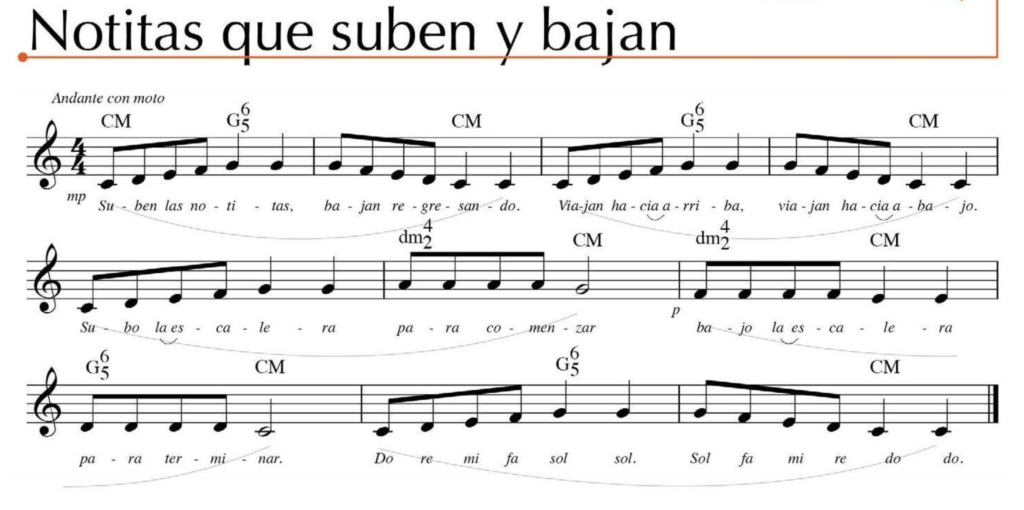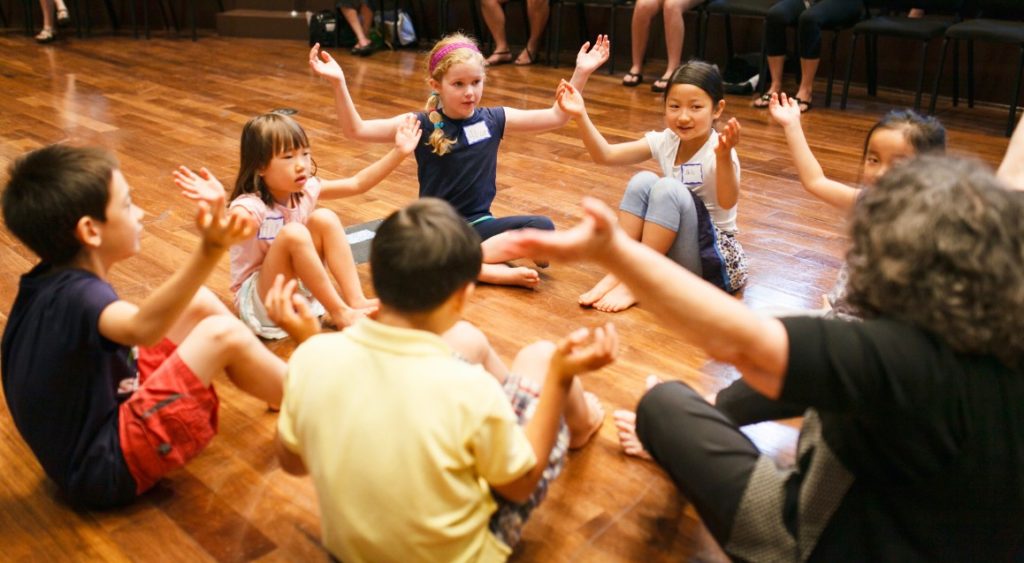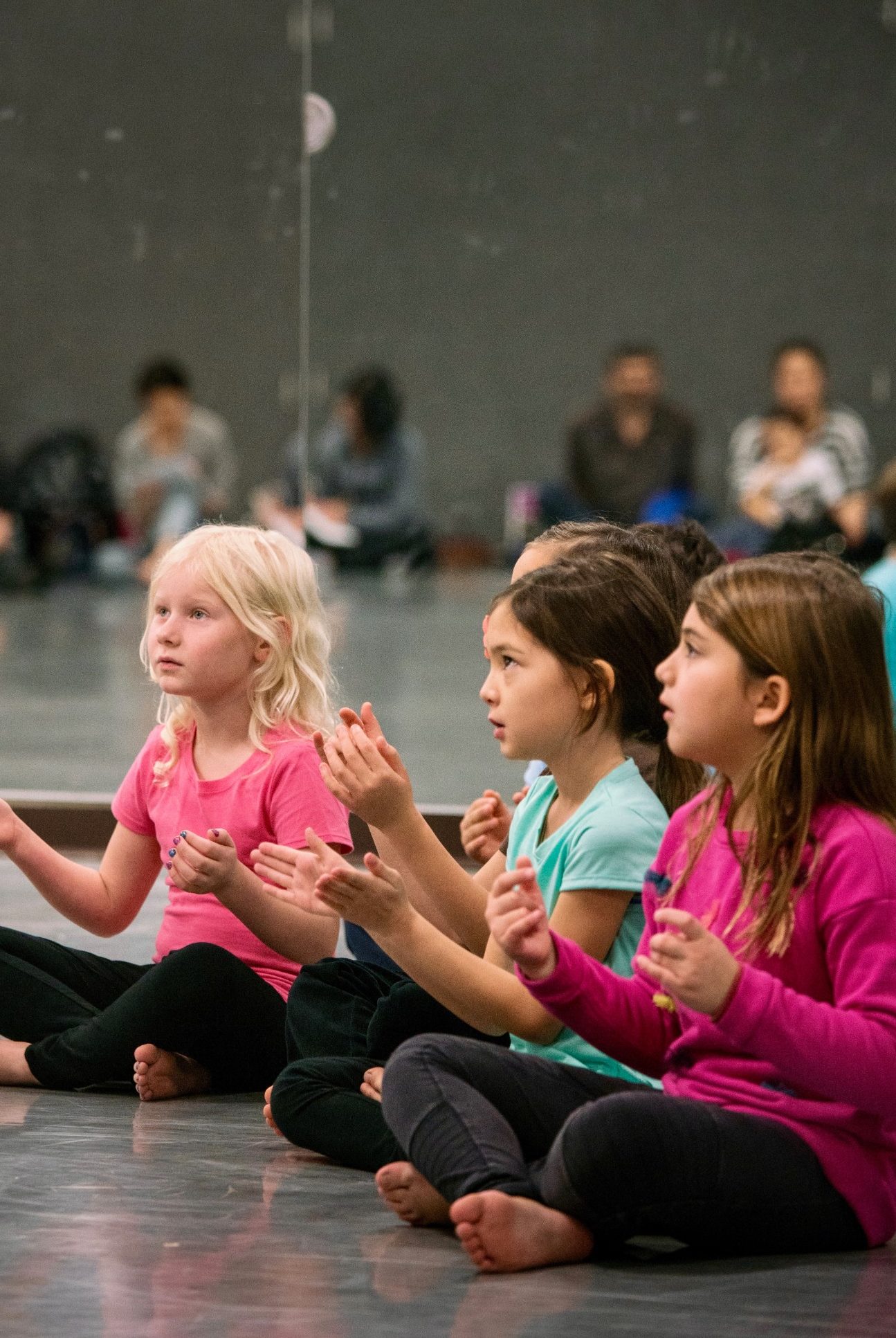
Lesson Plan: “Little notes going up and down”
The song “Little notes going up and down” is based on the C major pentascale (do-re-mi-fa-sol), with the addition of “la” in one of the verses. This song may be used in a music/movement class for babies and/or toddlers. Its main objective is to be aware of the sounds going up and down within the major scale pattern.

ENGLISH TRANSLATION
Notes are going up,
and notes are going down.
Travel going up and
travel going down.
I climb up the stair when I do go up,
I go down the steps when I now come down.
Lesson Plan
There are several exercises that may be done in ascending sequence from easiest to more challenging. (Depending on the age and experience of the group, every activity may be used, or only a few of them)
- The babies and adults sit in a circle together with the instructor who sings the song a cappella showing an ascending and descending movement with her arms following the melodic pattern and lyrics of the song.
- First time: students watch and listen.
- Second time: everyone joins the instructor singing the song and doing similar arm movements.
- Third time: everyone stands up and sings the song with up and down gestures (stretching, bending, etc)

- The instructor calls the attention to the two quarter notes at the end of each measure which fall with two syllables of the text:
- Instructor makes an ascending rolling arm movement and claps in the two quarter notes.
- Or descending, depending on the contour of the melody.
- Students and adults imitate
- Instructor plays the song at the piano.
- The eight-note pattern is placed on different parts of the body and the two quarter notes are stepped (done individually).
- Pairs: they place the eight-notes on their own body and clap together the quarter notes while singing

- Teacher improvises music at the piano
- When students hear the rhythmic pattern of the song, they do similar movements to the ones they just did in step 3.
- When students hear to unknown rhythmic patterns or free music, they improvise free movements
- Instructor places hoops or long sticks on the floor in order for the students to “step the song” up and down the line of hoops: following the rhythm and melodic pattern.
- Students stand in line to wait for their turn (each students does one phrase while everyone sings)

- Same activity as 5) but now done with solfège syllables
- MINOR MODE: Teacher plays the song in minor mode
- Students try to identify which sounds are different
- Students create movement patterns for the “new song”
- Mode mixture: Teacher combines major and minor mode within the same song
- Students show the difference with movements while everyone sings